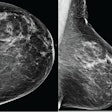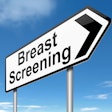Monday, November 27 | 9:10 a.m.-9:20 a.m. | RC215-04 | Arie Crown Theater
Recall rates for digital breast tomosynthesis (DBT) remain low over time, even if there are initial increases when the technology is first implemented, according to Yale University researchers.Dr. Maryam Etesami and colleagues will present research that included 23,269 DBT screening exams interpreted by seven radiologists between October 2011 and October 2016. The study showed an overall DBT recall rate of 7.7% over a five-year period.
DBT technology was introduced at Yale in 2011. Recall rates increased from year 1 to year 2 of the study time frame, but then decreased in year 3 and stabilized through year 5. Recall rates for asymmetries and architectural distortions, in particular, increased in years 1 and 2, with a subsequent decrease in year 3 and no change through year 5; recall rates for calcifications decreased steadily over the five-year study period.
In addition, Etesami's group found that the overall PPV1 (the number of cancers found in all exams recalled at screening) was 6.5% over the study period, with a decrease from year 1 to year 2 and a subsequent increase through year 5.
What's the bottom line? Yes, there's a learning curve when DBT is implemented, but it's worth it, Etesami and colleagues concluded.
"A learning curve exists for DBT, [but the technology's] benefits include reduced recalled rates and improved PPV1, which are sustainable over time," they wrote.




















